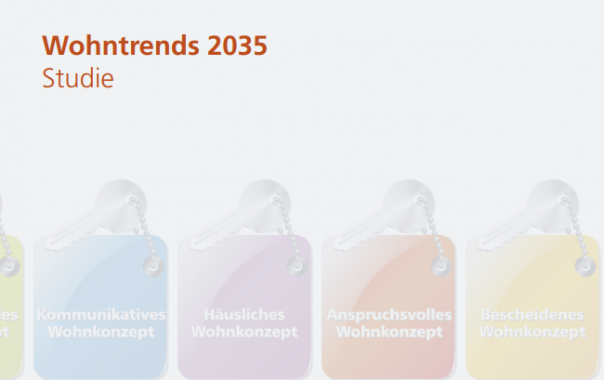German Housing 2035
GdW looks at the future trends of the sector
Berlin, 21 November 2018 | Social, Urban
Every five years, Housing Europe German member organisation, GdW (Housing Germany) releases a comprehensive study, carried out by InWIS - Institut für Wohnungswesen, Immobilienwirtschaft, Stadt- und Regionalentwicklung, outlining the key future trends that will be shaping the way housing providers operate and residents live in the country. We put together an English summary of the findings of this year’s edition.
Demographic change, technological and social developments in Germany impact directly the work of housing providers. The country is becoming more and more diverse according to the GdW report while the overall population is expected to reach around 83 million by 2030. More than a quarter will be above 65 years old.
Looking at the economy, the rise of prosperity levels is balanced by an also increasing trend in the number of people at risk of poverty- from 14,6% in 2009 to 15,7% in 2016. At the same time, the unemployment rate has fallen from 8,1% in 2009 to 6,7%. The demand for affordable housing remains high both in the urban centres that get congested due to migration and labour mobility but also in the surrounding areas leading to urban sprawl. The new urban and suburban reality is usually followed by segregation that calls for better integration and social mix. Many of the causes are not new, of course, but are intensified through the latest migration wave, the continuous digitalisation and their effects on the job market, city planning and the polarization of the housing market.
GdW highlights that the further development of the broadband internet connection and the introduction of 5G technology will boost the use of Internet of Things (IoT) in the housing sector while smart living at neighbourhood level will unfold further. Housing providers, according to the survey, have a key role to play in smart neigbourhoods and smart cities promoting strategies that focus among other things on the organisation of local business and energy efficiency.
With regards to rentals, the challenge will indeed be to find the right tenant, namely someone who can live comfortably in the community. More and more information will be available in digital form improving and simplifying the matchmaking process between dwellings and tenants. The same trend applies for the communication with the existing tenants that will be carried out increasingly online using apps, chatbots etc.
The report also underlines that in the coming years the alternative options within the spectrum between rentals- big share in Germany- and home ownership will become more important as the changing needs and social profiles will favour niches like cluster housing, collaborative living, cohousing etc.
Finally, planning and organisation of space will be key in the future. Therefore, the housing sector will benefit from the use of tools like Building Information Modelling (BIM) to lower cost and to increase efficiency towards a mix that brings together “high-tech and Hygge (the Nordic concept of cosyness)”.
Leave comments